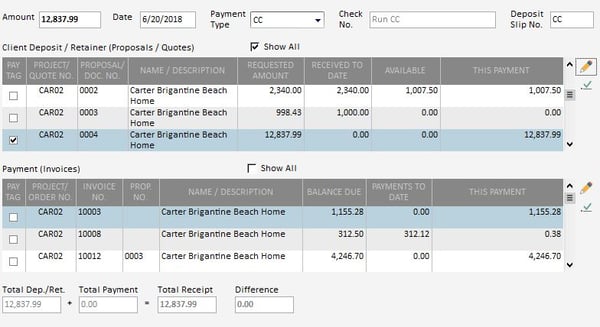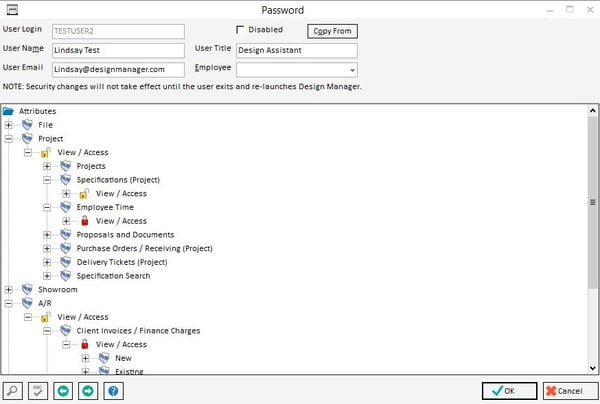Behind every great bookkeeper is a set of processes and tools that pave the way for success. Just as a design firm needs the right bookkeeper to be financially sound, a bookkeeper needs the right software to keep things running smoothly on a day-to-day basis. Because the interior design business model is so unique, it requires specialized solutions to manage it. No one knows this better than a bookkeeper who has worked with generic accounting solutions in the past and since made the switch to Design Manager.
 To truly understand what makes Design Manager the best option for design firms of all sizes, we interviewed Desiree Galazin, an experienced bookkeeper who has worked for established design firms such as De La Torre Design Studio and Bunny Williams. Throughout our conversation, Desiree highlighted three key benefits of using Design Manager as a bookkeeper at a major interior design firm.
To truly understand what makes Design Manager the best option for design firms of all sizes, we interviewed Desiree Galazin, an experienced bookkeeper who has worked for established design firms such as De La Torre Design Studio and Bunny Williams. Throughout our conversation, Desiree highlighted three key benefits of using Design Manager as a bookkeeper at a major interior design firm.
Designed for Designers
Designers are busy. They’re constantly coming up with creative solutions for clients, and the last thing they have time for is accounting. “Something I really like about my role is that I’m the support for designers,” says Desiree Galazin, who spends her days at Bunny Williams organizing proposals, processing payments, and chasing down receipts. Unlike a generic accounting solution such as QuickBooks, Design Manager breaks down accounting tasks and data in ways everybody in the firm can understand and access. “The project coordinators and owners can use Design Manager if they need to, whereas with QuickBooks, no one ever understood what I was working on,” says Galazin.
The nice thing about Design Manager is that it’s built specifically for interior designers. “Design Manager is so much more valuable than QuickBooks for interior designers because it's catered to them,” says Galazin. Rather than entering deposits and retainers as regular line items into QuickBooks alongside things like furniture and markups, Design Manager has a process built specifically for the interior design business model that makes it easy for designers to understand each project’s financials at a glance. “With QuickBooks, you have to kind of duct tape things together to get them to work the way you want to,” says Galazin. Design Manager can handle the demands of the interior design business model right off the bat.

Track Everything All in One Place
Design Manager is a robust platform, meaning it’s designed to keep firms organized even as they scale. “One of the beautiful things about Design Manager is that all of your information from every project you’ve ever done is always there,” says Galazin, who has seen owners search for furniture they used in a project 10 years ago. Unlike QuickBooks, which recommends users start a new company file when data limits are reached, Design Manager is built with data volume in mind so you will never have to start fresh and lose your design history. “I think that's really important for designers, more so than other businesses, because from my experience, designers have really close relationships with their clients and vendors, and being able to pull these past records is key,” says Galazin.
As a bookkeeper, Galazin appreciates having the ability to track every item through the accounting process back to a reference number in Design Manager. “It’s an invaluable tool,” she says. “I can pull a work in process report that says ‘lampshade times three,’ and have no idea what that is, but because there's a reference number, I can trace it,” says Galazin, who has found it much more challenging to locate things using QuickBooks in the past.

A System the Whole Firm Can Use
With Design Manager, collaboration is seamless across the entire firm. “It’s a huge time saver,” says Galazin, who frequently needs designers and project coordinators to answer proposal-related questions within the system. Using Design Manager, everyone in the firm can quickly access these documents themselves. “Generally only the bookkeeper has access to QuickBooks because there is extremely confidential information such as payroll involved,” says Galazin.
Design Manager offers more in-depth privileges and security settings based on each user’s individual license. A company admin can act as a gatekeeper, setting user permissions and assigning view/edit privileges on a case-by-case basis. As a bookkeeper, Galazin likes having the ability to grant designers access to certain client-related reports, while keeping invoices confidential. Design Manager logs each user’s activity, keeping everyone on the same page and helping avoid confusion. “Everyone having some level of access to the same basic information enhances user accountability and saves so much time on my end,” says Galazin.

A longtime Design Manager user, Desiree Galazin is a talented bookkeeper currently working full-time at Bunny Williams. She is looking to take on additional part-time work for interior design clients in need of accounting assistance on nights and weekends. If this sounds like something you’d be interested in, please contact Desiree for further information.

